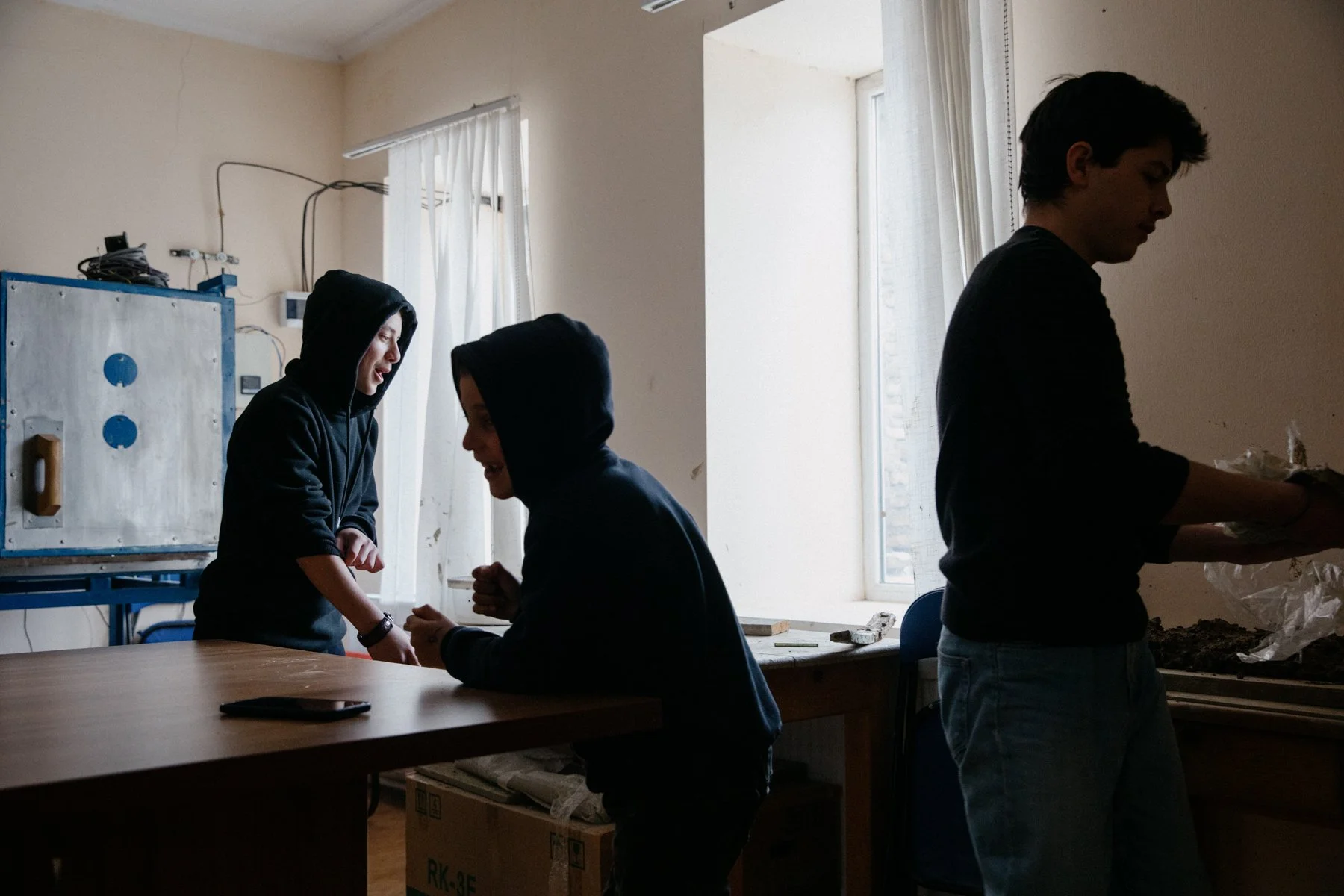
Abandoned houses on the occupation line near Bershueti. A Russian border guard base sits behind them.

Boys play football in Shamgona, just half a mile from the nearest Russian troops on the other side of the Enguri River.

Snow blankets the ground at a cemetery on a hill to the east of Kirbali. The occupation line passes through the cemetery.

EUMM monitors Tamás Fekete and Roger Brandin survey fishing boats south and north of the Abkhazian boundary line at Anaklia.

A child's doll, damaged during the 2008 war between Georgia and Russia, on show at the museum in Ergneti.

Members of the Nikozi Cathedral choir during practice at the village's art school.

People walk towards Abkhazia on the Enguri Bridge.

The village of Jariasheni is cut off from the fields to its north by wire.

Zaira Jigania, an IDP from Abkhazia, lives alone in a room in the same building as Zugdidi council's cleaning department. She has spent years fighting to get her own apartment but hasn't succeeded yet.

A photograph of one of Zaira's sons who served in the 1992-1993 Abkhaz War and died in 2004.

A Russian-built watch hut in the hills north of Mejvriskhevi.

A Georgian police officer on a ridge in Upper Nikozi overlooking Tskhinvali, the de-facto capital of South Ossetia.

Giorgi Beruashvili in his garden in the Gori II IDP settlement.

A house in the village of Otobaia, on Abkhaz-controlled territory, can be seen across the Enguri River.

Giorgi Abalaki walks beneath the grapevines in his garden. He lives in the last house before the boundary line with South Ossetia in the village of Kirbali. 76-year-old Giorgi has lived alone since his wife died several years ago.

A table in Giorgi Abalaki's house dedicated to his late wife Vera.

Men attempt to free a van from the mud at a cemetery in Mejvriskhevi.

The Black Sea coast at Anaklia is the furthest point north that is controlled by the Georgian government.

A cow stands near the bridge which formerly provided a crossing point between Orsantia in Georgian-controlled territory and Otobaia in Abkhazia. The crossing was closed by the Russian military in 2016.

A villager drives his tractor along the southern bank of the Enguri River in Orsantia.

The railway line that used to lead into Tskhinvali, the de-facto capital of South Ossetia.

Passengers from Abkhazia arrive at a checkpoint on the Georgian-controlled side of the Enguri Bridge.

A collective accomodation centre for IDPs in Zugdidi. Many of the residents have lived in poor conditions here since the 1992-1993 Abkhaz War.

Boys clean up after a pottery session at Nikozi Art School. The school was founded by Isaiah, the Bishop of Nikozi & Tskhinvali, to provide a range of extra-curricular activities including pottery, music and English lessons.

A poster on display at the school in Koki, a village near the Enguri River.

Residents of newly-built accomodation for IDPs in Zugdidi. 6 towers are currently occupied with a further 6 under construction.

The flag of Abkhazia flies above the Saberio-Pakhulani crossing point. One of the two remaining crossings between Abkhazia and the rest of Georgia, it is pedestrian only which means all goods transported through it must be carried by hand.

A man gestures while talking about Joseph Stalin in front of a statue of the Soviet leader in Mejvriskhevi.

A group of 5- and 6-year-olds watch Tom and Jerry at a pre-school run by the Danish Refugee Council for the children of IDPs in Military Town, Senaki. The IDP settlement has around 3,000 residents and was formerly accomodation for those stationed at the nearby military base.

Border infrastructure on the western edge of Adzvi. A Russian base sits on the hill behind.

An elderly man walks towards the Enguri Bridge in the direction of Abkhazia.

Nikozi Climbing Club provides after-school sessions for children living in the area.































